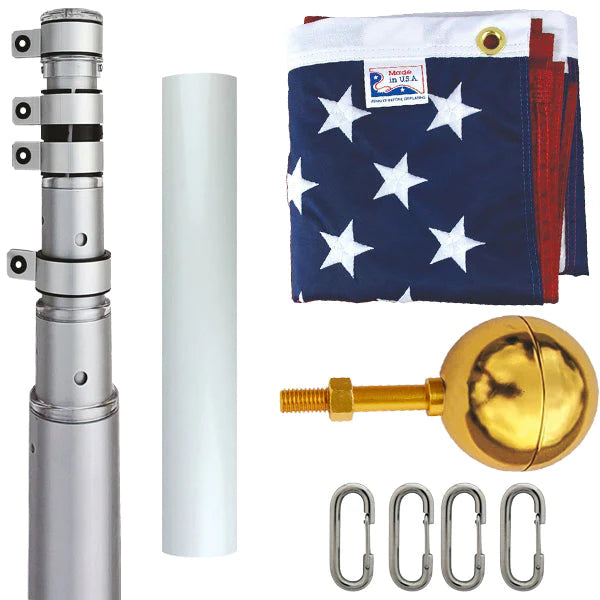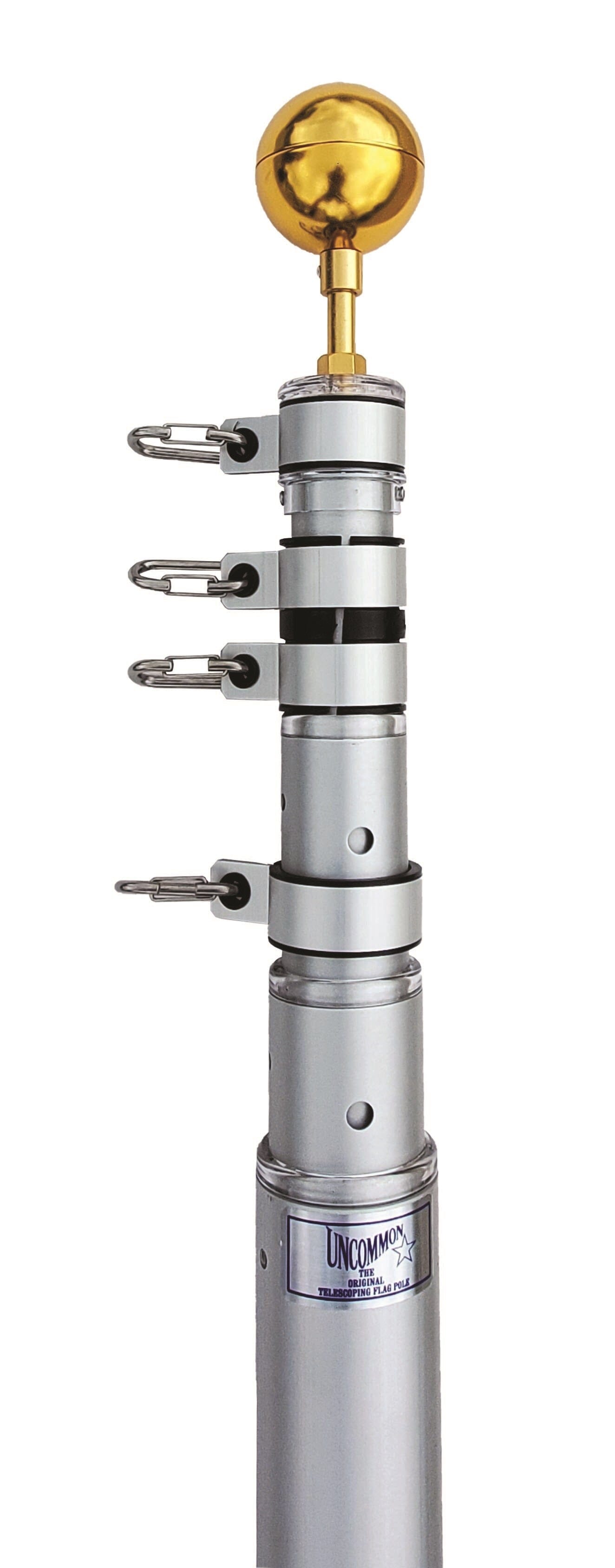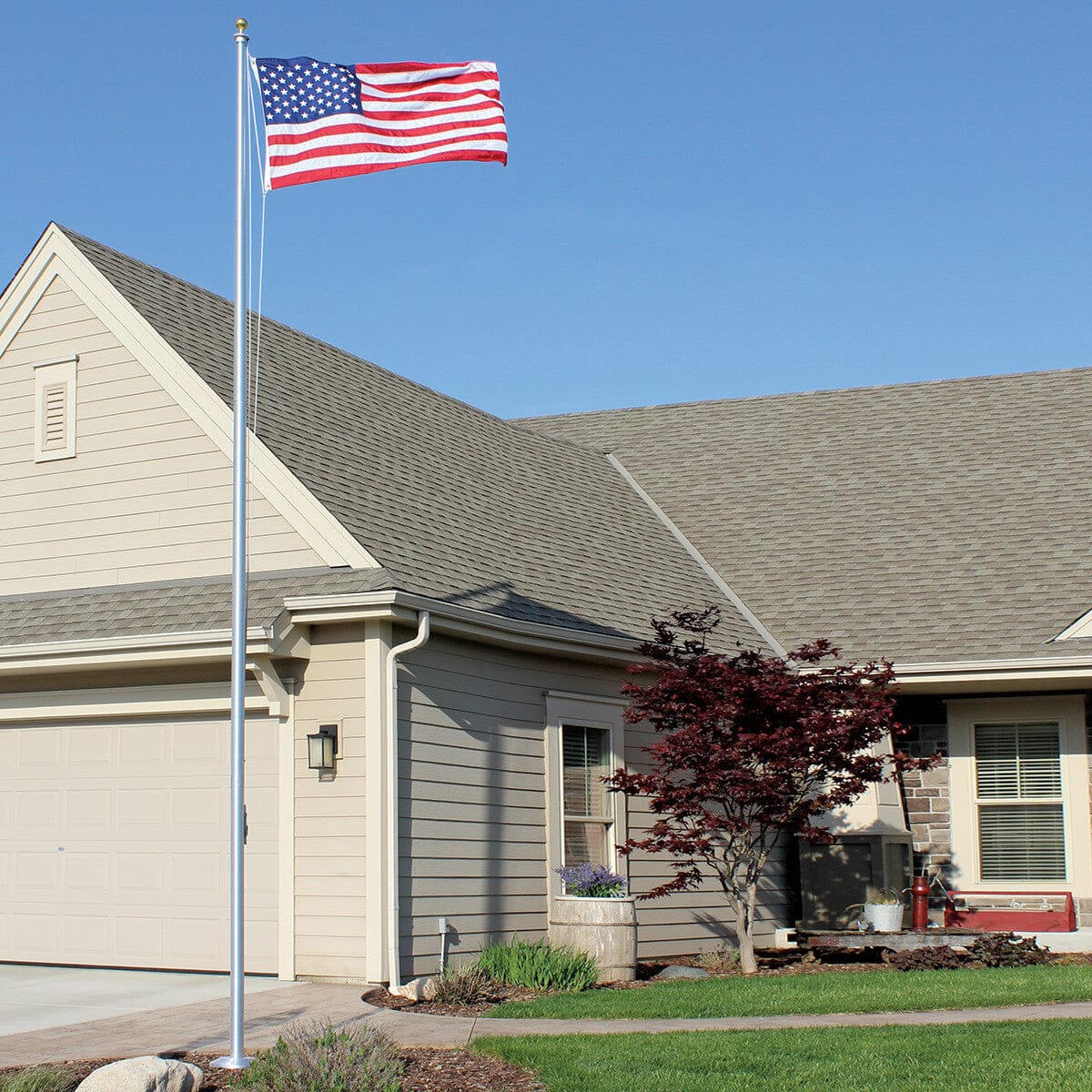Adding a flagpole to your lawn can be a wonderful way to increase the aesthetic appeal of your home while showing your pride in your country. But you likely have several questions you need to ask about the pole and the installation itself. Read below for the answers to eight frequently asked questions about residential flagpoles.
How Can My HOA Affect This Process?
One question you may have is whether your homeowner’s association (HOA) can determine how you add a new flagpole to your lawn. The answer is that it can. Before you start this process, make sure you check with your HOA to see if it has any rules regarding flagpoles. For example, you may find that your association has certain guidelines regarding the height of a new flagpole. Your HOA has these rules in place so elements of your development remain aesthetically consistent.
How Tall Should My Flagpole Be?
Another often-asked question is how tall the flagpole should be in relation to your home. Usually, residential flagpoles are 20 feet tall. However, this should change if you have a two- to three-story home. In that case, you may want to purchase a flagpole that stands 25 or 30 feet tall.
But make sure you test the length of the flagpole before assuming it will work. Otherwise, you may end up with a flagpole that is disproportional to your home and does not look right. Additionally, as we mentioned above, ensure the height conforms to your HOA’s guidelines.
Where Should I Put the Flagpole?
After choosing the height of the flagpole, you may wonder where you should put it in relation to your house. Ideally, you should pick a location where the flagpole will be visible from nearly every angle.
Therefore, you may want to consider playing it near the front door. However, you should also make sure you avoid installing the flagpole next to any power lines, trees, or other structures that it may damage if it collapses. It is also wise to pick an area where the flagpole’s base won’t uproot your plants or damage your landscaping.
What Kind of Material Should the Flagpole Be Made of?
Another frequently asked question about residential flagpoles is what kind of material is best to use for the pole itself. Obviously, you want something that will last a long time and can endure the elements. One option you have is aluminum, which offers the advantage of being very durable during harsh weather conditions. Additionally, when compared with steel, aluminum is lighter and does not rust as easily.
You could also go with fiberglass, which is lightweight and will not rust. Although aluminum can endure harsh weather better than fiberglass, the latter is also nonconductive, so it won’t be a safety risk in the case of an electrical storm. Ultimately, you must pick which material is a better fit for you as the homeowner.
Which Flagpole Design Is Best?
Homeowners also must choose which design they want for their flagpoles. If you choose a one-piece flagpole, you will need to pick between an external or an internal halyard, which helps you raise and lower your flag.
Although an external halyard is less expensive and can bring a classic aesthetic to your lawn, it may also result in extra noise when the halyard hits the pole. You can instead choose to go with an internal halyard, which reduces noise since it is confined inside the pole. In addition, the internal halyard allows you to raise and lower your flag much more easily, which is particularly useful for taller flagpoles. The internal halyard also provides the advantage of keeping your flags safer from theft since it is inside the pole. On the other hand, the external halyard ties to the cleat on the outside, making it openly accessible to passersby.
You can also choose to install a telescoping flagpole, which allows you to skip the use of a halyard altogether. Instead, you will slide the sections of the pole upward until you have completely extended it. The pole’s sections will lock into place to give it stability. The telescoping flagpole reduces the frustration you might experience when dealing with ropes. Plus, telescoping flagpoles feature swivel clips that will help your flag fly in whatever direction the wind is blowing it.
What Color Works Best for My Flagpole?
Another question you may have is what color works best for your flagpole. This can depend on what material you get for your pole. For example, some providers may offer a fiberglass pole with only a white finish. However, you typically get more options with an aluminum pole, including satin, bronze, or black hues.
Ultimately, you want to select your color based on how it fits in with your fencing or your home’s trim. You should also consider getting a pole with an anodized finish that provides more protection during severe weather. This will make the flagpole’s paint last longer and be less prone to chipping or scratches.
How Deep of a Hole Do I Need for the Base?
If there is anything your flagpole will need to stand tall, it is a stable base. Part of that process will involve making a hole in the ground. Ultimately, you should ensure your hole is at least 2 feet deep and at least four times your pole’s diameter.
What Do I Need To Do To Create the Base?
Part of creating a solid base is getting the right tools and materials. Namely, you must use cement or concrete to form a large block that stops the pole from collapsing. After the concrete has cured, you should be able to install the flagpole safely. Then, it’s ready to start waving and showing your patriotism.
Now that you know the answers to these questions, the process of adding a flagpole to your residence should be a lot less complicated. If you are looking for a decorative flagpole for your house, take a look at our collection at Liberty Flagpoles. We offer reliable, secure products that will make the perfect addition to your property.








